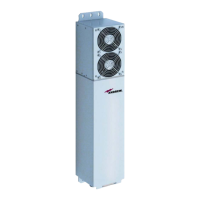Manual for ION™-M7P/17P (M-cab)
& Subassemblies
Page 14 MF0145A7A_uc_FCC_modif.doc
2. INTRODUCTION
2.1. PURPOSE
Cellular telephone systems transmit signals in two directions between base
transceiver station (BTS) and mobile stations (MS) within the signal coverage area.
If weak signal transmissions occur within the coverage area because of indoor
applications, topological conditions or distance from the transmitter, extension of the
transmission range can be achieved by means of an optical distribution system.
Such a system contains an optical Master Unit and several Remote Units. The
number of the Remote Units depends on the hardware and software configuration.
The Remote Units are connected to the Master Unit with optical links. The optical
loss must be less than 10 dB inclusive optical couplers or splitters.
The Master Unit is the connection to the base transceiver stations. The configuration
of a Master Unit depends on the number of the Remote Units and the frequency
range.
WDM (Wave Division Multiplex) filters are integrated in the optical modules. For the
UL, a wavelength within 1540 nm – 1562 nm is used. For the DL, a wavelength of
1310 ±20 nm is used. The maximum output power for the UL and DL is 5.7 mW.
2.2. THE ION-M7P/17P (INTELLIGENT OPTICAL NETWORK; MMR)
The ION-M7P/17P is a multi-band, multi-operator remote unit configuration used in
conjunction with a master unit in the ION optical distribution system.
This system transports up to two frequency bands simultaneously (700 MHz and
1700/2100 MHz), providing a cost-effective solution for distributing capacity from one
or more base stations.
The ION system transports signals on the RF layer in a very cost-effective manner
enabling multiple operators to use multiple technologies and move their signals
simultaneously from a cluster of base station to a number of remote locations over
the same fiber.
The ION-M optical distribution system is a cost-effective coverage solution for dense
urban areas, tunnels, subways, airports, convention centers, high-rise buildings and
other locations where physical structures increase path loss.
The combination of these units gives maximum flexibility while providing a scalable
solution. The system is optimized for CDMA, WCDMA, HSPA+, and OFDM
modulation in the 700 MHz and 1700/2100 MHz bands. Furthermore it is provisioned
for future modulation and frequency bands.

